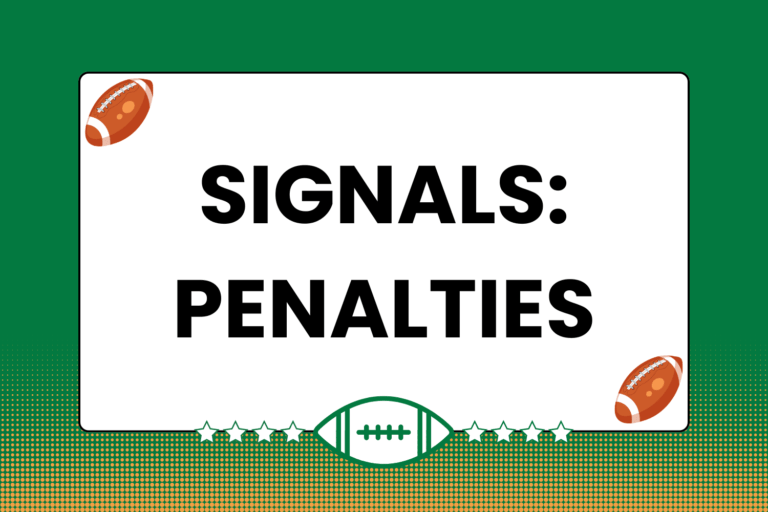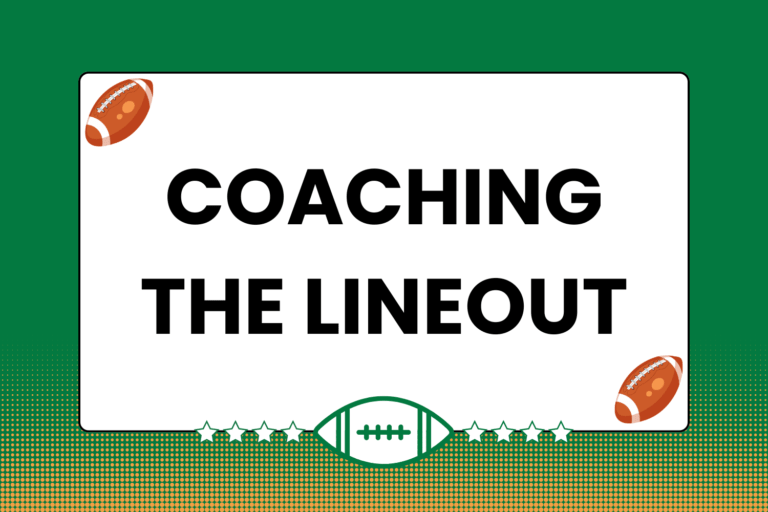To the untrained eye, rugby can appear to be a rather chaotic game, where players do whatever they can to both score, and keep the other team from scoring. However, there are actually a set of laws that govern the game of rugby, though it may come as a shock to some people. To provide structure to those laws, there exists a hierarchy of consequences that decide the reaction to a penalty; the more severe the penalty, the more drastic the consequence. This guide features an overview of the structures that decide the outcome of a penalty.
The Free Kick
A Free Kick is the generic term for how play is restarted after one team is whistled for a penalty, although it may not actually result in a kick. The team awarded the free kick has a couple of options, and doesn’t necessarily have to kick the ball at all.
What You’ll See
Though a free kick is the general term for what happens after a penalty is awarded, the non-offending team actually has a couple of options from which to choose. With the exception of the scrum option (explained below), all players on the penalized team must immediately backtrack 10 meters toward their try line. Here are the options a team has:
- Kick for touch: A player from the non-offending team will punt the ball down the field and into touch. A line-out occurs where the ball went into touch, and the same team that kicked the ball gets to throw it in.
- Penalty Goal: If one team is awarded a penalty close to the other team’s in-goal zone, that team can try for a penalty goal. From the spot of the penalty, a player will attempt to place kick the ball through the uprights for three points.
- Tap Kick: If the penalized team is slow to react, a player from the non-offending team can quickly resume play while the opposing players are slowly retreating the required 10 meters. This happens when a player from the non-offending team taps the ball with his/her boot and immediately charges ahead or passes the ball off.
- Scrum: This is the last option the non-offending team has. The non-offending team would put the ball into the scrum, and play would resume as normal after one side or the other won the ball.
Again, except for the scrum option, all players in the penalized team are considered offsides until they retreat 10 meters from the spot of the penalty. So if the non-offending team chooses a tap kick and runs ahead, only players who were already more than 10 meters behind the ball may make a play on the ball carrier. All other players on the offending team are offsides until they either make it the required 10 meters back or get behind a teammate that made a legal play for the ball.
Advantage Play
After the referee calls a penalty on one team, sometimes he/she will allow play to continue if the non-offending team has a chance to make a play on/with the ball- this is called Advantage play. In other words, if one team commits a penalty that doesn’t immediately keep the other team from advancing the ball, the referee won’t automatically stop the game. This gives the non-offending team a chance to make a play, which is an advantage over the team that committed the penalty.
What You’ll See
The referee will call a penalty but not stop play, giving the non-offending team a chance to do something first. Advantage play is completely at the referee’s discretion, both regarding when to allow it, and in deciding how long it continues.
The referee will say something like, “penalty for ___1____, on ____2____,” with ‘1’ being the penalty being called and ‘2’ being the team that committed the penalty. For example, “penalty for obstruction on Blue.”
Immediately following that call, the referee will stick one arm straight up in the air and say something along the lines of, “advantage ____’A’____, continue play,” with ‘A’ representing the non-offending team. For example, “Penalty for obstruction on Blue, advantage for Red, continue play.”
Advantage play will continue until one of two things happen:
- The non-offending team successfully makes a play and advances the ball. The referee will say, “Advantage over, play on,” indicating that the non-offending team successfully used advantage play and the penalty won’t be called.
- The non-offending team is unable to make a play. The referee will whistle play dead, and let the non-offending team decide what happens next.
Carding a Player
Referees ‘card’ players for severe or repeated infractions. A ‘carding’ is indicated by the referee approaching a player and telling that player they’re being carded, and simultaneously showing them either a yellow or red card. The two different colors indicate whether the penalty is moderate (yellow) or severe (red).
What You’ll See
Yellow Card:
The referee will whistle play dead, go up to the offending player, tell them what specific penalty they’re charged with, and show them a yellow card. The player’s name and number, penalty he/she committed and time of the penalty are all recorded on the card. Then that player is instructed to go to the ‘sin bin’ for no more than 10 minutes. The sin bin is rugby’s version of the penalty box; an area off the pitch designated by the referee. The penalized player must remain there for the duration of the penalty, even if the other team scores.
Yellow cards are usually reserved for very serious penalties in which it’s evident that one player was purposefully trying to injure another. High tackling – trying to bring the ball carrier down by grabbing their neck or head – is one such example.
Red Card:
It starts just like a yellow-card situation. After the referee is done telling the penalized player what penalty they’re being called for, that player is to immediately leave the pitch and cannot return for the rest of the game. Red cards are reserved for the worst of the worst penalties: Punching a player, eye gouging, biting, stomping a player on the ground, intentionally injuring an opposing player, etc.
Hot Tip: Ways to be Carded
- One player repeatedly committing moderate penalties of the same kind
- Speaking disrespectfully to the referee or touch judge
- Dangerous play (such as high tackles)
- Fighting.
These are some of the more common card-worthy infractions, but they’re not the only things that will get a player carded.
The Fewer, the Better
It’s important to know which actions will result in penalties – mostly so they can be avoided as much as possible. Penalties happen, though; sometimes on purpose and sometimes not. It’s best to just realize that they are a natural part of the game, and not make a habit of committing them.





